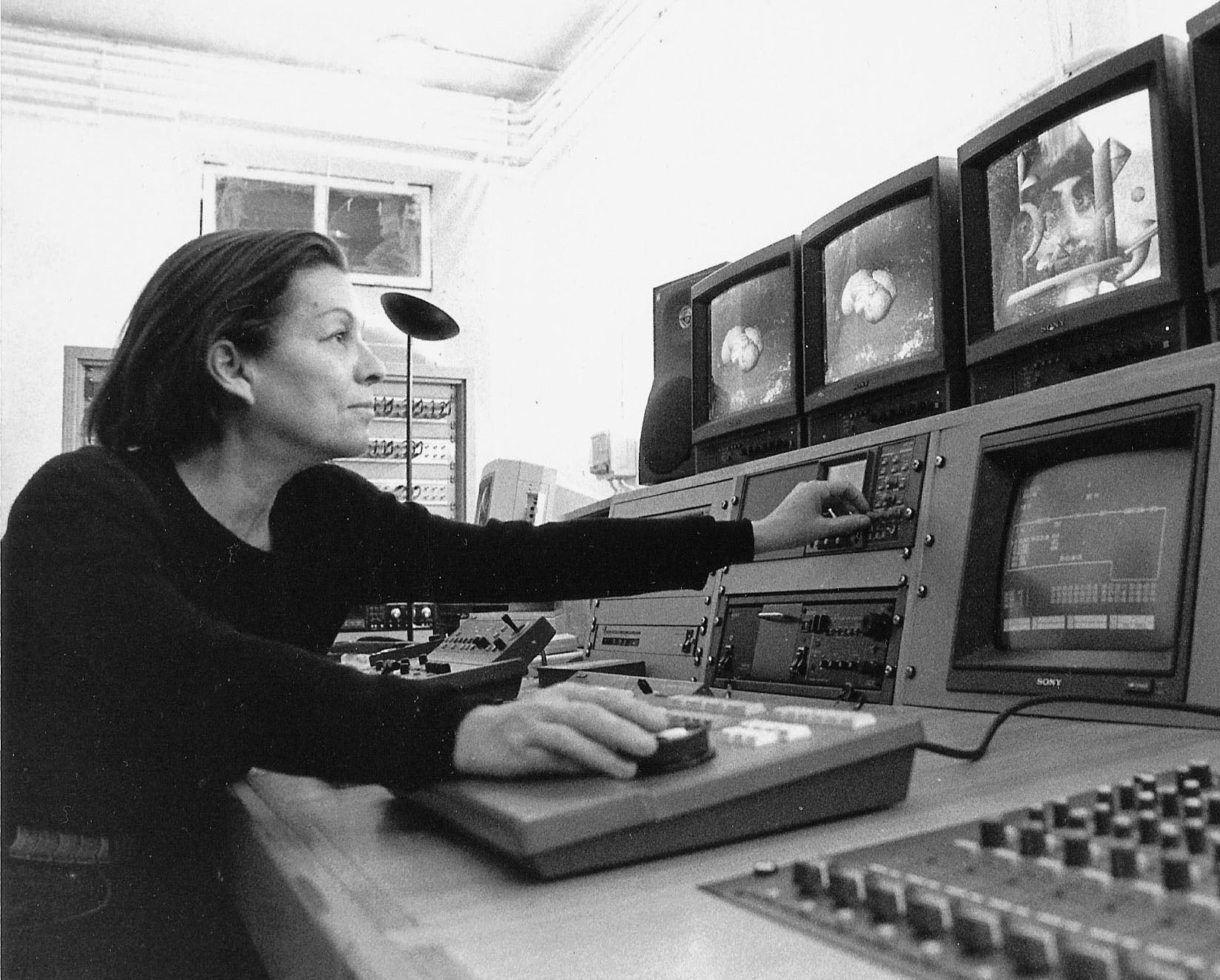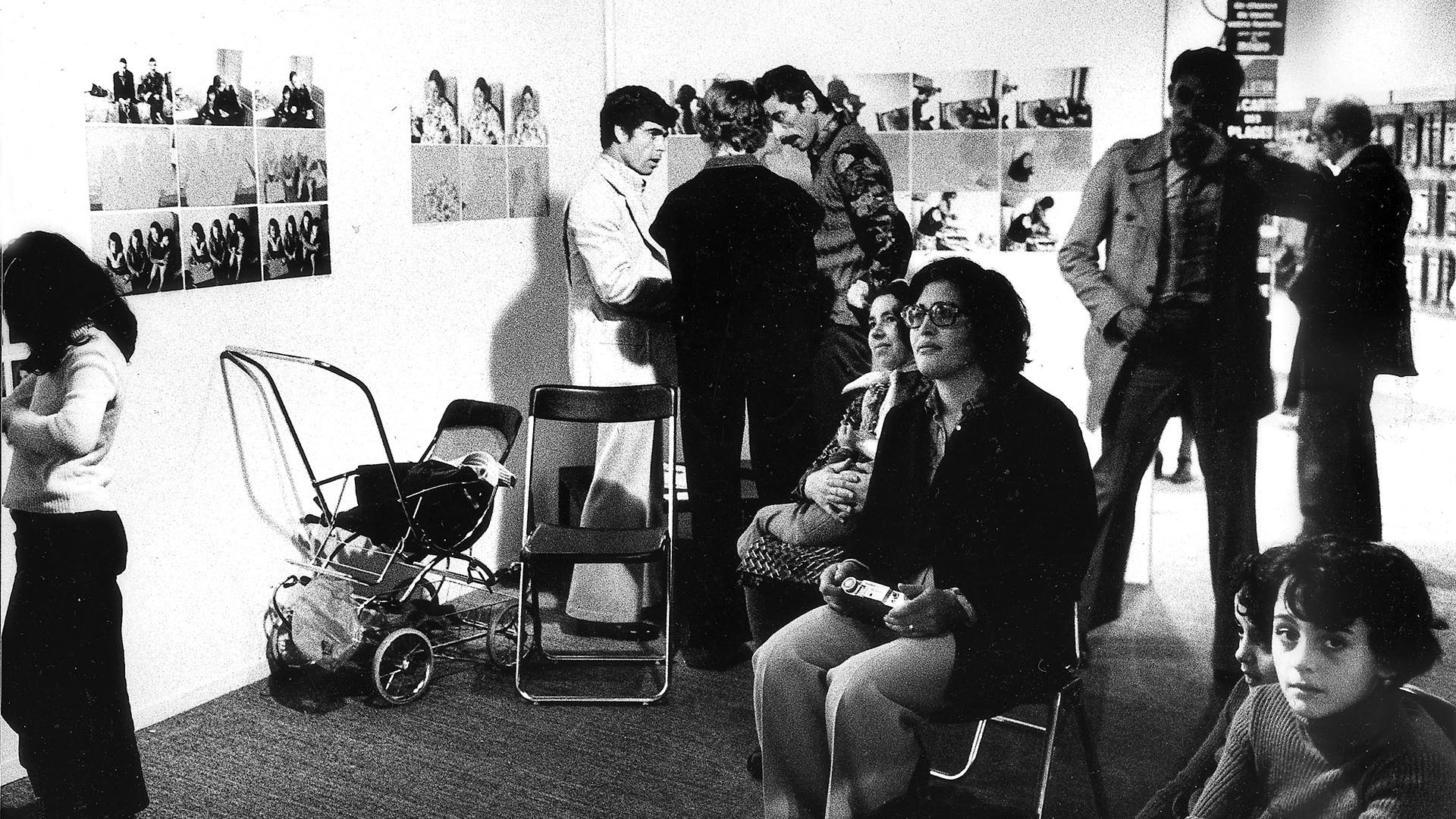

“Exile Is a Hard Job”. These words by Turkish poet Nâzim Hikmet capture the essence of Nil Yalter, a nomadic artist, experimenter with expressive techniques, pioneer of multimedia and tireless explorer of the possibilities of conceptual art.
I thought that the natural progression of my work would lead me to focus on temporary dwellings such as favelas and bidonville, and subsequently to delve into the lives of immigrant workers in France.
Revisiting iconic works such as Topak Ev and Exile Is a Hard Job at the Venice Art Biennale offers a unique opportunity to reflect on your artistic journey. How do you perceive the evolution of these works since their creation, and what do they mean for you?
I left Istanbul in 1965 because I wanted to learn. There was nothing in Istanbul – no galleries, no books, no museums, no contemporary art – but I wanted to immerse myself in art. That’s why I came to Paris and settled here. It took me seven years to work and learn: visiting and admiring the Impressionists’ actual paintings, not just small reproductions, exploring modern art of that time, attending young artists’ exhibitions, and staying informed about any developments concerning modern art in the United States. In particular, I would often visit the famous Ileana Sonnabend’s gallery in Paris, where I had the chance to gradually become familiar with movements such as conceptual art, minimal art, and pop art. Then, in 1973, I met Suzanne Pagé, who was the chief curator of the Museum of Modern Art in Paris, and I presented her a project. It was about a nomadic tent, a yurt, which served as a woman’s house for the Bekdik nomads in Anatolia. Essentially, I had only created some drawings centered around this idea, but she loved them, informing me that she would organize a solo show by the end of the year. At that point, addressed by a friend who is an ethnographer, I traveled to Anatolia to meet these nomads and stayed with them for two days. A young woman from that tribe begins building her own tent from the age of fourteen, and when she gets married, it becomes her house. She crafts it herself using animal skins, as their only resources are muttons and sheep. She builds her tent, and her husband can enter it only when she gives him her permission. On the contrary, she is not allowed to venture outside; she leads a life mostly confined within the tent, as the external world is considered men’s domain. While talking with these women, I learnt that each of them had her husband, brothers, or sons who had ventured to large cities like Istanbul and Ankara to look for a job in factories. There, they had to live in shantytowns. Some also migrated to Germany, France, Belgium, or other European countries in search of opportunities. I thought that the natural progression of my work would lead me to focus on temporary dwellings such as favelas and bidonville, and subsequently to delve into the lives of immigrant workers in France. So in 1976, I began a project about Turkish and Portuguese immigrant workers in Paris and its surroundings. Back to the tent, after the exhibition at the Museum of Modern Art, it traveled to many places, as it can be easily assembled and disassembled. It was showcased in major exhibitions in Europe and even in Rio de Janeiro in 2013, with Adriano Pedrosa arranging for the tent to be transported from Istanbul in a large crate. We were already acquainted by then, and he is familiar with my work and its evolution over the years. As you can see, it was a lengthy process.
It might be overstated to claim that art can change the world, but I’ve seen firsthand that my work has at least changed the world of the people I’ve collaborated with
How was working with immigrant workers?
To be honest, you don’t just knock at people’s doors and announce, “I’m here to take videos and photographs of you.” That would be called stealing images. Instead, I collaborated with sociologists, social workers, and networks of associations that provide assistance to immigrant communities. This preliminary work went on for about a year, after which I presented the results – drawings, photographs, and videos – in Paris in 1977. Over the following ten years, I continued to expand the project, involving groups of clandestine workers employed in the textile industry as well, documenting the precarious conditions in which they worked, bent over sewing machines in shanty spaces for hours, breathing carcinogenic substances. This new body of work was also exhibited at the Museum of Modern Art in Paris in 1983.

Today there seems to be a great interest in the issues of immigrants, but you have definitely been a pioneer in this regard…
I have been addressing these issues since the 1970s, when immigration was not at the forefront of the art world’s attention as it is today. Even though the immigrant population may have changed, the underlying problems are still the same. That’s why everybody is interested in addressing them now. In 2012, I conceived the idea of creating street posters by combining photographs and drawings of immigrants. My intention was to display them in urban areas alongside a quote by the renowned Turkish poet Nâzim Hikmet: “Exile is a hard job.” By this, he means that exile is not merely a matter of seeking profit, as some may believe when immigrants arrive by boat in Europe. It’s a very hard job. Thus, I painted these posters and displayed them in streets across various cities worldwide – currently, we’re present in twenty cities. Additionally, I included the quote in the native language of each country, as well as in the languages spoken by the exiled people residing there. Currently, we are also engaged in producing a book with the Biennale concerning the work on posters. The project, which began in 1973 with the tent drawings presented in Paris, is therefore still evolving today, and I hope it can continue for a long time even after I am no longer here.
“Exile is a hard job.” By this, Nâzim Hikmet means that exile is not merely a matter of seeking profit, as some may believe when immigrants arrive by boat in Europe. It’s a very hard job.
How will the two works be displayed at the Biennale?
There’s obviously a strong connection between the tent and the posters. Adriano Pedrosa has wanted to present the two works together, placing the posters in an indoor space, even though their natural dimension is urban. In parks and streets of the cities where the represented immigrants live, they always provoke very strong reactions; in some cases, they are even angrily torn down from the walls. They have rarely been exhibited in museums. As for the tent, it will indeed be the original one. The Arter Museum in Istanbul, a highly esteemed contemporary art institution that opened its doors about ten years ago, has agreed to loan it for the duration of the Biennale. It is the first time that the two works are exhibited together.
You often explore themes of identity, migration, and feminism. Do you believe that art has the power to catalyze global change?
Without art or culture, I think that the world wouldn’t exist anymore. Yet, I remain uncertain on whether art truly influences global change. It might be overstated to claim that art can change the world, but I’ve seen firsthand that my work has at least changed the world of the people I’ve collaborated with. Some still reach out to me. I recall an episode in 1977 when I invited some of the workers I had collaborated with to a biennial in Paris. In that occasion, the director expressed himself in racist terms, stating that their presence could cause discomfort. This incident led to a standoff, with me threatening to remove my work. Ultimately, the director relented. I have a powerful image where you can see all these workers with their families sitting and discussing between themselves in front of their photos and drawings. Perhaps, in that moment, a small change occurred.

You define yourself as a self-taught artist. How has this aspect influenced your creative practice?
When I refer to myself as a self-taught artist, I mean that I didn’t attend any formal art school or academy. Instead, I independently learned how to work with various media, including painting, drawing, video, photography, and even computer-generated images over the course of twenty years. This decision to forgo traditional art education was intentional – I chose to immerse myself in experiences abroad, such as spending time in India and Iran for two years, which served as my form of schooling. In Turkey, at the Academy of Fine Arts students would spend weeks and months on repetitive drawing exercises, sketching the same subject over and over. In the late 1950s, art schools, even in France where I lived, were often terrible. Structured learning may have its merits, but I didn’t feel compelled to follow that route. Perhaps this unconventional path granted me some freedom.
You were born in Egypt, lived in Turkey, and eventually settled in France. Additionally, you mentioned traveling to Iran, Pakistan, and India. How have these experiences shaped you, and how do you perceive the relationship between personal identity and artistic expression?
Well, I am a nomad. I’ve been navigating countries and cultures throughout my life, always curious to explore diverse cultures. How did that change me? I’d say it has made me more of a superwoman than merely a super immigrant. Of course, my art would be different without experiencing such varied cultural contexts, but in what way I’m not able to say. During my time in India, for example, I performed pantomime shows with my husband. Traditional Indian dance theater is often silent. Our pantomime performances allowed us to overcome language barriers. This experience deeply changed my artistic perspective. I met many important artists, such as Ravi Shankar, and their influence is reflected in my work, such as the nomad tent and the paintings from the ’60s to the ’70s that recall Indian classical art motifs. I didn’t meet any contemporary artists, though. That was in 1957, can you imagine? There were neither tourists nor foreigners, apart from those associated with consulates and embassies. So probably this influenced my work, too. That was a thought-provoking question, I’m going to work further on this.
Your practice is characterized by frequent collaborations and forays into fields other than art. How does this approach influence your artistic process?
I like to explore different disciplines to ensure accuracy in my work and avoid errors. I mainly collaborate with people from the field of social sciences, who often recommend books for me to read on relevant topics. I don’t claim to become a sociologist or an anthropologist, but from their literature or by interacting directly with them, I gain knowledge and perspectives crucial to my artistic process.
Your use of multimedia is quite distinctive. What leads you to choose one medium over another?
When I decide to move from one topic to another, like from the tent to immigration and temporary dwelling, I follow a process that connects the two topics together. During this process, the medium reveals itself. Just like when the American army came across the Sony Portapak video cameras. Nam June Paik [Korean-American artist, considered the founder of video art, ed.] notably used it for the first time in 1965. I used it for the first time only in 1973. Holding it in my hands, I was fascinated; it seemed to reflect a part of myself, and artists from all over the world found themselves drawn to this Portapak video technology as well. I remember thinking, “I must explore this medium someday.” That day arrived later, coinciding with my exploration of immigration in Paris and its surroundings. Activists and political figures in Africa, America, and South America had already utilized the Portapak for political activism, and this reinforced my belief that this medium was well-suited for what I was going to do. Photography also held a similar appeal. This is my approach to selecting mediums: the subject itself naturally calls for them.
Do you think you will be incorporating new technologies such as artificial intelligence into your work now?
I’m not particularly interested in artificial intelligence; it’s something one needs to be very careful about. New technologies, including AI, require thoughtful consideration. They shouldn’t dominate or fascinate us; instead, we must maintain control over them, especially as an artist. Artificial intelligence may be frightening, but we can’t stop progress. Personally, I’ve worked extensively with interactive CD-ROMs and various computer programs, including creating three-dimensional animations and virtual images. However, I don’t find myself captivated by these technologies; I only use them when the subject of my work demands it.